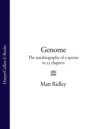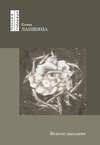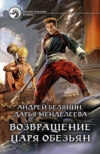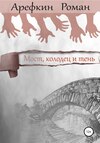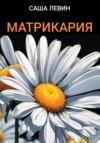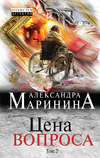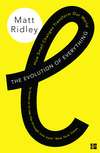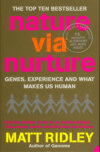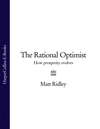Buch lesen: «Genome: The Autobiography of a Species in 23 Chapters»
Genome
The autobiography of a species in 23 chapters
Matt Ridley


Copyright
William Collins
An imprint of HarperCollinsPublishers Ltd.
1 London Bridge Street
London SE1 9GF
This edition published by Harper Perennial 2004
First published in Great Britain in 1999 by Fourth Estate Limited
Copyright © Matt Ridley 1999
Matt Ridley asserts the moral right to be identified as the author of this work.
A catalogue record for this book is available from the British Library.
The author is grateful to the following publishers for permission to reprint brief extracts: Harvard University Press for four extracts from Nancy Wexler’s article in The code of codes, edited by D. Kevles and R. Hood (pp. 62 – 9); Aurum Press for an extract from The gene hunters by William Cookson (p. 78); Macmillan Press for extracts from Philosophical essays by A. J. Ayer (p. 338) and What remains to be discovered by J. Maddox (p. 194); W. H. Freeman for extracts from Narrow roads of gene land by W. D. Hamilton (p. 131); Oxford University Press for extracts from The selfish gene by Richard Dawkins (p. 122) and Fatal protein by Rosalind Ridley and Harry Baker (p. 285); Weidenfeld and Nicolson for an extract from One renegade cell by Robert Weinberg (p. 237). The author has made every effort to obtain permission for all other extracts from published work reprinted in this book.
All rights reserved under International and Pan-American Copyright Conventions. By payment of the required fees, you have been granted the non-exclusive, non-transferable right to access and read the text of this ebook on-screen. No part of this text may be reproduced, transmitted, downloaded, decompiled, reverse engineered, or stored in or introduced into any information storage and retrieval system, in any form or by any means, whether electronic or mechanical, now known or hereinafter invented, without the express written permission of HarperCollins ebooks
HarperCollinsPublishers has made every reasonable effort to ensure that any picture content and written content in this ebook has been included or removed in accordance with the contractual and technological constraints in operation at the time of publication
Source ISBN: 9781857028355
Ebook Edition © JUNE 2010 ISBN: 9780007381845
Version: 2017-04-07
Praise
‘This is a spectacular book.’ Spectator
‘This is as absorbing a read as any science-fiction novel but it is dealing with the horizon of real knowledge. Barely a page passes without a new morsel of knowledge brought with almost breathless enthusiasm from academic journals by Matt Ridley.’ Sunday Herald
‘Ridley is a raconteur, skilled at telling vivid stories of discoveries and amassing facts.’ New Scientist
‘Genome offers one of the most perceptive and lively accounts of what we are learning – and might find out in the future – about the book of man.’ Prospect
‘A lucid and exhilarating romp through our human chromosomes that lets us see how nature and nurture combine to make us human.’ James Watson, author of The Double Helix
‘Genome, like the best of popular science, is both an exciting scientific exploration and a sheer pleasure to read.’ Yorkshire Post
‘Readers will find this book difficult to put down.’ New Humanist
Books of the Year 1999
‘Matt Ridley’s Genome lives up to the high standard of The Red Queen and The Origins of Virtue. This makes it very good indeed, for Ridley is a leader among today’s highly successful scientist authors. Intelligence, Disease, Immortality, Eugenics…23 topics of particular human interest are tied to our 23 chromosomes. The 23 chapters brim with Ridley’s customary stylish wit and cool insouciance. The book appears appropriately in the closing year of Watson and Crick’s century, which is about to culminate in the finished Human Genome Project.’ Richard Dawkins, Guardian
‘Matt Ridley’s Genome is as elegant, as unpatronising and lucid as a layman could desire. Blessed are the users of plain language, for they shall be read.’ Miranda Seymour, Independent
‘Genome makes accessible a subject that is far too important to be left to the boffins and the doctors. It’s elegant, lucid, formidably well informed and, above all, human.’ Jane Ridley, Spectator
For my parents and my children
Table of Contents
Cover Page
Title Page
Copyright
Praise
Preface
Chromosome 1 - Life
Chromosome 2 - Species
Chromosome 3 - History
Chromosome 4 - Fate
Chromosome 5 - Environment
Chromosome 6 - Intelligence
Chromosome 7 - Instinct
Chromosome 8 - Conflict
Chromosome 9 - Self-Interest
Chromosome 10 - Disease
Chromosome 11 - Stress
Chromosome 12 - Personality
Chromosome 13 - Self-Assembly
Chromosome 14 - Pre-History
Chromosome 15 - Immortality
Chromosome 16 - Sex
Chromosome 17 - Memory
Chromosome 18 - Death
Chromosome 19 - Cures
Chromosome 20 - Prevention
Chromosome 21 - Politics
Chromosome 22 - Eugenics
Chromosome 23 - Free Will
Bibliography and Notes
Index
Acknowledgements
Keep Reading
About the Author
Also By
About the Publisher
Preface
The human genome – the complete set of human genes – comes packaged in twenty-three separate pairs of chromosomes. Of these, twenty-two pairs are numbered in approximate order of size, from the largest (number 1) to the smallest (number 22), while the remaining pair consists of the sex chromosomes: two large X chromosomes in women, one X and one small Y in men. In size, the X comes between chromosomes 7 and 8, whereas the Y is the smallest.
The number 23 is of no significance. Many species, including our closest relatives among the apes, have more chromosomes, and many have fewer. Nor do genes of similar function and type necessarily cluster on the same chromosome. So a few years ago, leaning over a lap-top computer talking to David Haig, an evolutionary biologist, I was slightly startled to hear him say that chromosome 19 was his favourite chromosome. It has all sorts of mischievous genes on it, he explained. I had never thought of chromosomes as having personalities before. They are, after all, merely arbitrary collections of genes. But Haig’s chance remark planted an idea in my head and I could not get it out. Why not try to tell the unfolding story of the human genome, now being discovered in detail for the first time, chromosome by chromosome, by picking a gene from each chromosome to fit the story as it is told? Primo Levi did something similar with the periodic table of the elements in his autobiographical short stories. He related each chapter of his life to an element, one that he had had some contact with during the period he was describing.
I began to think about the human genome as a sort of autobiography in its own right – a record, written in ‘genetish’, of all the vicissitudes and inventions that had characterised the history of our species and its ancestors since the very dawn of life. There are genes that have not changed much since the very first single-celled creatures populated the primeval ooze. There are genes that were developed when our ancestors were worm-like. There are genes that must have first appeared when our ancestors were fish. There are genes that exist in their present form only because of recent epidemics of disease. And there are genes that can be used to write the history of human migrations in the last few thousand years. From four billion years ago to just a few hundred years ago, the genome has been a sort of autobiography for our species, recording the important events as they occurred.
I wrote down a list of the twenty-three chromosomes and next to each I began to list themes of human nature. Gradually and painstakingly I began to find genes that were emblematic of my story. There were frequent frustrations when I could not find a suitable gene, or when I found the ideal gene and it was on the wrong chromosome. There was the puzzle of what to do with the X and Y chromosomes, which I have placed after chromosome 7, as befits the X chromosome’s size. You now know why the last chapter of a book that boasts in its subtitle that it has twenty-three chapters is called Chapter 22.
It is, at first glance, a most misleading thing that I have done. I may seem to be implying that chromosome 1 came first, which it did not. I may seem to imply that chromosome 11 is exclusively concerned with human personality, which it is not. There are probably 60,000–80,000 genes in the human genome and I could not tell you about all of them, partly because fewer than 8,000 have been found (though the number is growing by several hundred a month) and partly because the great majority of them are tedious biochemical middle managers.
But what I can give you is a coherent glimpse of the whole: a whistle-stop tour of some of the more interesting sites in the genome and what they tell us about ourselves. For we, this lucky generation, will be the first to read the book that is the genome. Being able to read the genome will tell us more about our origins, our evolution, our nature and our minds than all the efforts of science to date. It will revolutionise anthropology, psychology, medicine, palaeontology and virtually every other science. This is not to claim that everything is in the genes, or that genes matter more than other factors. Clearly, they do not. But they matter, that is for sure.
This is not a book about the Human Genome Project – about mapping and sequencing techniques – but a book about what that project has found. Some time in the year 2000, we shall probably have a rough first draft of the complete human genome. In just a few short years we will have moved from knowing almost nothing about our genes to knowing everything. I genuinely believe that we are living through the greatest intellectual moment in history. Bar none. Some may protest that the human being is more than his genes. I do not deny it. There is much, much more to each of us than a genetic code. But until now human genes were an almost complete mystery. We will be the first generation to penetrate that mystery. We stand on the brink of great new answers but, even more, of great new questions. This is what I have tried to convey in this book.
PRIMER
The second part of this preface is intended as a brief primer, a sort of narrative glossary, on the subject of genes and how they work. I hope that readers will glance through it at the outset and return to it at intervals if they come across technical terms that are not explained. Modern genetics is a formidable thicket of jargon. I have tried hard to use the bare minimum of technical terms in this book, but some are unavoidable.
The human body contains approximately 100 trillion (million million) CELLS, most of which are less than a tenth of a millimetre across. Inside each cell there is a black blob called a NUCLEUS. Inside the nucleus are two complete sets of the human GENOME (except in egg cells and sperm cells, which have one copy each, and red blood cells, which have none). One set of the genome came from the mother and one from the father. In principle, each set includes the same 60,000–80,000 GENES on the same twenty-three CHROMOSOMES. In practice, there are often small and subtle differences between the paternal and maternal versions of each gene, differences that account for blue eyes or brown, for example. When we breed, we pass on one complete set, but only after swapping bits of the paternal and maternal chromosomes in a procedure known as RECOMBINATION.
Imagine that the genome is a book.
There are twenty-three chapters, called CHROMOSOMES.
Each chapter contains several thousand stories, called GENES.
Each story is made up of paragraphs, called EXONS, which are interrupted by advertisements called INTRONS.
Each paragraph is made up of words, called CODONS.
Each word is written in letters called BASES.
There are one billion words in the book, which makes it longer than 5,000 volumes the size of this one, or as long as 800 Bibles. If I read the genome out to you at the rate of one word per second for eight hours a day, it would take me a century. If I wrote out the human genome, one letter per millimetre, my text would be as long as the River Danube. This is a gigantic document, an immense book, a recipe of extravagant length, and it all fits inside the microscopic nucleus of a tiny cell that fits easily upon the head of a pin.
The idea of the genome as a book is not, strictly speaking, even a metaphor. It is literally true. A book is a piece of digital information, written in linear, one-dimensional and one-directional form and defined by a code that transliterates a small alphabet of signs into a large lexicon of meanings through the order of their groupings. So is a genome. The only complication is that all English books read from left to right, whereas some parts of the genome read from left to right, and some from right to left, though never both at the same time.
(Incidentally, you will not find the tired word ‘blueprint’ in this book, after this paragraph, for three reasons. First, only architects and engineers use blueprints and even they are giving them up in the computer age, whereas we all use books. Second, blueprints are very bad analogies for genes. Blueprints are two-dimensional maps, not one-dimensional digital codes. Third, blueprints are too literal for genetics, because each part of a blueprint makes an equivalent part of the machine or building; each sentence of a recipe book does not make a different mouthful of cake.)
Whereas English books are written in words of variable length using twenty-six letters, genomes are written entirely in three-letter words, using only four letters: A, C, G and T (which stand for adenine, cytosine, guanine and thymine). And instead of being written on flat pages, they are written on long chains of sugar and phosphate called DNA molecules to which the bases are attached as side rungs. Each chromosome is one pair of (very) long DNA molecules.
The genome is a very clever book, because in the right conditions it can both photocopy itself and read itself. The photocopying is known as REPLICATION, and the reading as TRANSLATION. Replication works because of an ingenious property of the four bases: A likes to pair with T, and G with C. So a single strand of DNA can copy itself by assembling a complementary strand with Ts opposite all the As, As opposite all the Ts, Cs opposite all the Gs and Gs opposite all the Cs. In fact, the usual state of DNA is the famous DOUBLE HELIX of the original strand and its complementary pair intertwined.
To make a copy of the complementary strand therefore brings back the original text. So the sequence ACGT become TGCA in the copy, which transcribes back to ACGT in the copy of the copy. This enables DNA to replicate indefinitely, yet still contain the same information.
Translation is a little more complicated. First the text of a gene is TRANSCRIBED into a copy by the same base-pairing process, but this time the copy is made not of DNA but of RNA, a very slightly different chemical. RNA, too, can carry a linear code and it uses the same letters as DNA except that it uses U, for uracil, in place of T. This RNA copy, called the MESSENGER RNA, is then edited by the excision of all introns and the splicing together of all exons (see above).
The messenger is then befriended by a microscopic machine called a RIBOSOME, itself made partly of RNA. The ribosome moves along the messenger, translating each three-letter codon in turn into one letter of a different alphabet, an alphabet of twenty different AMINO ACIDS, each brought by a different version of a molecule called TRANSFER RNA. Each amino acid is attached to the last to form a chain in the same order as the codons. When the whole message has been translated, the chain of amino acids folds itself up into a distinctive shape that depends on its sequence. It is now known as a PROTEIN.
Almost everything in the body, from hair to hormones, is either made of proteins or made by them. Every protein is a translated gene. In particular, the body’s chemical reactions are catalysed by proteins known as ENZYMES. Even the processing, photocopying error-correction and assembly of DNA and RNA molecules themselves – the replication and translation – are done with the help of proteins. Proteins are also responsible for switching genes on and off, by physically attaching themselves to PROMOTER and ENHANCER sequences near the start of a gene’s text. Different genes are switched on in different parts of the body.
When genes are replicated, mistakes are sometimes made. A letter (base) is occasionally missed out or the wrong letter inserted. Whole sentences or paragraphs are sometimes duplicated, omitted or reversed. This is known as MUTATION. Many mutations are neither harmful nor beneficial, for instance if they change one codon to another that has the same amino acid ‘meaning’: there are sixty-four different codons and only twenty amino acids, so many DNA ‘words’ share the same meaning. Human beings accumulate about one hundred mutations per generation, which may not seem much given that there are more than a million codons in the human genome, but in the wrong place even a single one can be fatal.
All rules have exceptions (including this one). Not all human genes are found on the twenty-three principal chromosomes; a few live inside little blobs called mitochondria and have probably done so ever since mitochondria were free-living bacteria. Not all genes are made of DNA: some viruses use RNA instead. Not all genes are recipes for proteins. Some genes are transcribed into RNA but not translated into protein; the RNA goes directly to work instead either as part of a ribosome or as a transfer RNA. Not all reactions are catalysed by proteins; a few are catalysed by RNA instead. Not every protein comes from a single gene; some are put together from several recipes. Not all of the sixty-four three-letter codons specifies an amino acid: three signify STOP commands instead. And finally, not all DNA spells out genes. Most of it is a jumble of repetitive or random sequences that is rarely or never transcribed: the so-called junk DNA.
That is all you need to know. The tour of the human genome can begin.
CHROMOSOME 1 Life
All forms that perish other forms supply, (By turns we catch the vital breath and die) Like bubbles on the sea of matter borne, They rise, they break, and to that sea return.
Alexander Pope, An Essay on Man
In the beginning was the word. The word proselytised the sea with its message, copying itself unceasingly and forever. The word discovered how to rearrange chemicals so as to capture little eddies in the stream of entropy and make them live. The word transformed the land surface of the planet from a dusty hell to a verdant paradise. The word eventually blossomed and became sufficiently ingenious to build a porridgy contraption called a human brain that could discover and be aware of the word itself.
My porridgy contraption boggles every time I think this thought. In four thousand million years of earth history, I am lucky enough to be alive today. In five million species, I was fortunate enough to be born a conscious human being. Among six thousand million people on the planet, I was privileged enough to be born in the country where the word was discovered. In all of the earth’s history, biology and geography, I was born just five years after the moment when, and just two hundred miles from the place where, two members of my own species discovered the structure of DNA and hence uncovered the greatest, simplest and most surprising secret in the universe. Mock my zeal if you wish; consider me a ridiculous materialist for investing such enthusiasm in an acronym. But follow me on a journey back to the very origin of life, and I hope I can convince you of the immense fascination of the word.
‘As the earth and ocean were probably peopled with vegetable productions long before the existence of animals; and many families of these animals long before other families of them, shall we conjecture that one and the same kind of living filaments is and has been the cause of all organic life?’ asked the polymathic poet and physician Erasmus Darwin in 1794.1 It was a startling guess for the time, not only in its bold conjecture that all organic life shared the same origin, sixty-five years before his grandson Charles’ book on the topic, but for its weird use of the word ‘filaments’. The secret of life is indeed a thread.
Yet how can a filament make something live? Life is a slippery thing to define, but it consists of two very different skills: the ability to replicate, and the ability to create order. Living things produce approximate copies of themselves: rabbits produce rabbits, dandelions make dandelions. But rabbits do more than that. They eat grass, transform it into rabbit flesh and somehow build bodies of order and complexity from the random chaos of the world. They do not defy the second law of thermodynamics, which says that in a closed system everything tends from order towards disorder, because rabbits are not closed systems. Rabbits build packets of order and complexity called bodies but at the cost of expending large amounts of energy. In Erwin Schrödinger’s phrase, living creatures ‘drink orderliness’ from the environment.
The key to both of these features of life is information. The ability to replicate is made possible by the existence of a recipe, the information that is needed to create a new body. A rabbit’s egg carries the instructions for assembling a new rabbit. But the ability to create order through metabolism also depends on information – the instructions for building and maintaining the equipment that creates the order. An adult rabbit, with its ability to both reproduce and metabolise, is prefigured and presupposed in its living filaments in the same way that a cake is prefigured and presupposed in its recipe. This is an idea that goes right back to Aristotle, who said that the ‘concept’ of a chicken is implicit in an egg, or that an acorn was literally ‘informed’ by the plan of an oak tree. When Aristotle’s dim perception of information theory, buried under generations of chemistry and physics, re-emerged amid the discoveries of modern genetics, Max Delbruck joked that the Greek sage should be given a posthumous Nobel prize for the discovery of DNA.2
The filament of DNA is information, a message written in a code of chemicals, one chemical for each letter. It is almost too good to be true, but the code turns out to be written in a way that we can understand. Just like written English, the genetic code is a linear language, written in a straight line. Just like written English, it is digital, in that every letter bears the same importance. Moreover, the language of DNA is considerably simpler than English, since it has an alphabet of only four letters, conventionally known as A, C, G and T.
Now that we know that genes are coded recipes, it is hard to recall how few people even guessed such a possibility. For the first half of the twentieth century, one question reverberated unanswered through biology: what is a gene? It seemed almost impossibly mysterious. Go back not to 1953, the year of the discovery of DNA’s symmetrical structure, but ten years further, to 1943. Those who will do most to crack the mystery, a whole decade later, are working on other things in 1943. Francis Crick is working on the design of naval mines near Portsmouth. At the same time James Watson is just enrolling as an undergraduate at the precocious age of fifteen at the University of Chicago; he is determined to devote his life to ornithology. Maurice Wilkins is helping to design the atom bomb in the United States. Rosalind Franklin is studying the structure of coal for the British government.
In Auschwitz in 1943, Josef Mengele is torturing twins to death in a grotesque parody of scientific inquiry. Mengele is trying to understand heredity, but his eugenics proves not to be the path to enlightenment. Mengele’s results will be useless to future scientists.
In Dublin in 1943, a refugee from Mengele and his ilk, the great physicist Erwin Schrödinger is embarking on a series of lectures at Trinity College entitled ‘What is life?’ He is trying to define a problem. He knows that chromosomes contain the secret of life, but he cannot understand how: ‘It is these chromosomes…that contain in some kind of code-script the entire pattern of the individual’s future development and of its functioning in the mature state.’ The gene, he says, is too small to be anything other than a large molecule, an insight that will inspire a generation of scientists, including Crick, Watson, Wilkins and Franklin, to tackle what suddenly seems like a tractable problem. Having thus come tantalisingly close to the answer, though, Schrödinger veers off track. He thinks that the secret of this molecule’s ability to carry heredity lies in his beloved quantum theory, and is pursuing that obsession down what will prove to be a blind alley. The secret of life has nothing to do with quantum states. The answer will not come from physics.3
In New York in 1943, a sixty-six-year-old Canadian scientist, Oswald Avery, is putting the finishing touches to an experiment that will decisively identify DNA as the chemical manifestation of heredity. He has proved in a series of ingenious experiments that a pneumonia bacterium can be transformed from a harmless to a virulent strain merely by absorbing a simple chemical solution. By 1943, Avery has concluded that the transforming substance, once purified, is D NA. But he will couch his conclusions in such cautious language for publication that few will take notice until much later. In a letter to his brother Roy written in May 1943, Avery is only slightly less cautious:4
If we are right, and of course that’s not yet proven, then it means that nucleic acids [DNA] are not merely structurally important but functionally active substances in determining the biochemical activities and specific characteristics of cells – and that by means of a known chemical substance it is possible to induce predictable and hereditary changes in cells. That is something that has long been the dream of geneticists.
Avery is almost there, but he is still thinking along chemical lines. ‘All life is chemistry’, said Jan Baptista van Helmont in 1648, guessing. At least some life is chemistry, said Friedrich Wöhler in 1828 after synthesising urea from ammonium chloride and silver cyanide, thus breaking the hitherto sacrosanct divide between the chemical and biological worlds: urea was something that only living things had produced before. That life is chemistry is true but boring, like saying that football is physics. Life, to a rough approximation, consists of the chemistry of three atoms, hydrogen, carbon and oxygen, which between them make up ninety-eight per cent of all atoms in living beings. But it is the emergent properties of life – such as heritability – not the constituent parts that are interesting. Avery cannot conceive what it is about DNA that enables it to hold the secret of heritable properties. The answer will not come from chemistry.
In Bletchley, in Britain, in 1943, in total secrecy, a brilliant mathematician, Alan Turing, is seeing his most incisive insight turned into physical reality. Turing has argued that numbers can compute numbers. To crack the Lorentz encoding machines of the German forces, a computer called Colossus has been built based on Turing’s principles: it is a universal machine with a modifiable stored program. Nobody realises it at the time, least of all Turing, but he is probably closer to the mystery of life than anybody else. Heredity is a modifiable stored program; metabolism is a universal machine. The recipe that links them is a code, an abstract message that can be embodied in a chemical, physical or even immaterial form. Its secret is that it can cause itself to be replicated. Anything that can use the resources of the world to get copies of itself made is alive; the most likely form for such a thing to take is a digital message – a number, a script or a word.5
In New Jersey in 1943, a quiet, reclusive scholar named Claude Shannon is ruminating about an idea he had first had at Princeton a few years earlier. Shannon’s idea is that information and entropy are opposite faces of the same coin and that both have an intimate link with energy. The less entropy a system has, the more information it contains. The reason a steam engine can harness the energy from burning coal and turn it into rotary motion is because the engine has high information content – information injected into it by its designer. So does a human body. Aristotle’s information theory meets Newton’s physics in Shannon’s brain. Like Turing, Shannon has no thoughts about biology. But his insight is of more relevance to the question of what is life than a mountain of chemistry and physics. Life, too, is digital information written in DNA.6
